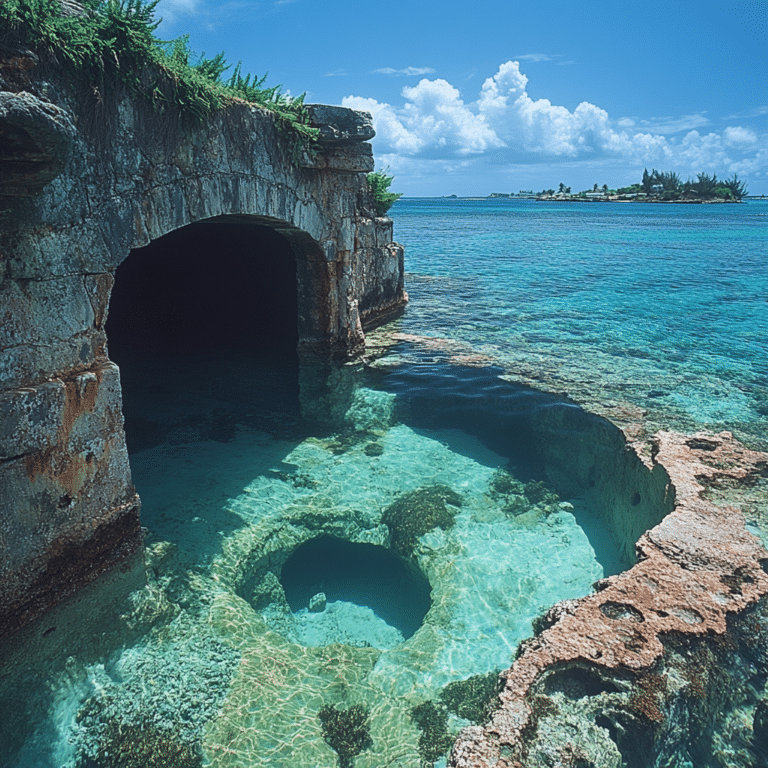The Otis Hurricane has left a severe imprint on Mexico’s coastal regions, marking one of the most catastrophic weather events in the nation’s history. With wind speeds soaring up to 160 mph at landfall, this hurricane became the first recorded Category 5 storm to hit Mexico’s Pacific coast, shattering records set by previous hurricanes like Patricia. The staggering economic toll of $12 to $16 billion in damages is compounded by the sad loss of at least 52 lives. This disaster has led to a relentless discussion on disaster preparedness and the lessons learned from such a devastating experience.
The Otis hurricane swept through prominent cities, tearing apart coastal towns and leaving residents reeling from its fury. From the upscale resorts of Acapulco to small beach communities, the crisis exposed the true vulnerabilities of the region. As we delve into the human and environmental impacts, it becomes evident that the Otis hurricane is not just a natural disaster; it’s a wake-up call highlighting the urgent need for effective response strategies and robust infrastructure planning.
The Impact of the Otis Hurricane on Mexico’s Coastal Regions
The aftermath of the Otis hurricane is evident in the chaos that has engulfed Mexico’s coastal regions. Areas like Acapulco, once bustling with tourists and thriving local businesses, now lay in ruins. The hurricane’s might ravaged beachfront establishments, leading to flooding that overwhelmed the area. Roads were rendered impassable, and power outages further compounded the misery experienced by residents.
Every corner of the affected regions felt the impact of the Otis hurricane. From San Luis Acatlán to Zihuatanejo, families confront daunting challenges in the wake of the storm. Shops that provided livelihoods now stand in disarray, and the local economy, heavily reliant on tourism, faces an uphill battle ahead. This situation raises pressing questions about the effectiveness of local infrastructures in facing such colossal natural adversities.
Environmental ramifications also deserve scrutiny, as debris and pollutants threaten marine life and ecosystems. Urban flooding has introduced further complications, endangering health and quality of life. It’s not merely a fight for survival; it’s a struggle to restore the spirit of these communities. As we turn our focus to the areas most affected, a clearer picture of the sheer devastation wrought by the Otis hurricane emerges.

Top 5 Most Affected Areas by the Otis Hurricane
The devastation from the Otis hurricane can be understood through the following five hardest-hit areas, where the impacts were most dire:
These regions showcase not just physical destruction but also highlight the overarching implications for economic recovery and population stability. The Otis hurricane has disrupted community life, and as the dust settles, each affected area must assess its needs for a sustainable recovery strategy.
Government Response to the Otis Hurricane Crisis
Following the devastation, scrutiny has turned toward the Mexican government’s role in disaster preparedness and response. Emergency protocols were invoked swiftly, and National Guard troops were dispatched to provide much-needed assistance in affected areas. Yet, critiques of these measures suggest a need for improvement, especially regarding timely resource allocation.
Historical comparisons reveal lessons from past disasters, such as Hurricane Patricia in 2015, where local governance struggled to respond effectively. What’s clear is that each hurricane provides critical feedback that must shape future approaches. A multifaceted recovery strategy is essential, utilizing lessons learned to bolster community engagement and avoid repeated pitfalls.
Many citizens expressed frustration as storms have become more intense and frequent, pointing to a lack of proactive measures in emergency management. Trust in government resourcefulness is a fragile foundation during crises, and rebuilding that trust is vital for the future.

The Role of Climate Change in Intensifying the Otis Hurricane
The Otis hurricane casts a shadow on the ongoing debate surrounding climate change and its increasing influence on the severity of natural disasters. Experts indicate that warmer ocean temperatures have a direct correlation with the intensification of hurricanes. The Otis hurricane, which surged from a tropical storm to a full-blown Category 5 hurricane in a mere 24 hours, underscores the unpredictability climate change introduces into weather patterns.
This rising trend can alter storm trajectories, potentially leaving many coastal communities unprepared for such rapid transformations. A comprehensive examination of climate data points to expansive implications for not only Mexico but coastal areas globally facing similar threats.
Engaging in this discussion is essential as it impacts not only how we view natural disasters but also informs policy initiatives that environ developers and stakeholders should consider for resilience planning. Sustainable practices and informed infrastructure investments emerge as critical components in mitigating future storm damage and loss of life.
Community Resilience: Stories of Survival and Recovery After Otis Hurricane
Amid widespread destruction, tales of resilience emerge. Heroes arise within communities banding together to brace against the Otis hurricane, with families staying close to support one another. Volunteers have tirelessly worked to distribute food and supplies to displaced families, shining a spotlight on the human spirit that perseveres even in adversity.
One notable account is of a local restaurant owner in Zihuatanejo, who opened his doors to provide meals for first responders and those in need. Such actions reveal that in the face of catastrophe, community bonds often strengthen—reminding us all of the importance of solidarity.
These heartwarming recovery stories are punctuated by a genuine desire to rebuild and emerge stronger. They demonstrate the ability to unify in the wake of disaster, a trait that drives communities to mend and grow. The Otis hurricane will forever remain a chapter in their history, but it is one where resilience overshadows despair.
Shaping the Future: Lessons Learned from the Otis Hurricane
The aftermath of the Otis hurricane reaffirms the necessity for preparing for unpredictable climate patterns. Policymakers must work hand in hand with scientists and community organizations to lay down strategic frameworks for future resilience. Engaging communities will be crucial, as they are on the frontlines of these disasters.
Infrastructure planning is paramount; proactive investments in sustainable practices and early warning systems can mitigate disaster impacts. Learning from the efforts and blunders following the Otis hurricane, we can better equip our communities for whatever nature throws our way.
The highlight of this recovery will be finding ways to tap into community strengths that emerged during the process. Unity and collective action turn tragedy into an opportunity. As the dust settles and rebuilding efforts commence, the resilience of those affected by the Otis hurricane could very well inspire recovery models in places battered by disasters all around the globe.
In conclusion, while the path ahead remains fraught with challenges, the spirit displayed in overcoming the devastation serves as a testament to the strength and perseverance of communities. Together, they can reconstruct not just homes and businesses but also a sense of normalcy and hope for the future.
Otis Hurricane: Fun Trivia and Interesting Facts
The Power of Otis
Did you know that Hurricane Otis rapidly intensified, catching many experts off guard? Hurricane intensity can change in a heartbeat, sometimes turning a tropical storm into a full-blown hurricane in just hours! This was evident when Otis came barreling towards the Pacific coast of Mexico, causing catastrophic damage. It’s a wild reminder of nature’s unpredictability, much like the unexpected success of the Korean pop culture phenomenon that swept across the globe and captured hearts everywhere.
While storms like Otis wreak havoc, humans often find ways to cope with stress. Just like the sweat meme, that humorously showcases our reactions to anxiety, we all have our own ways of dealing with the relentless nature of life. Unfortunately, there’s little humor in a hurricane’s aftermath, as whole communities grapple with the destruction left behind.
Weather Patterns and Pop Culture
Hurricanes have been a topic of fascination for decades, often making their way into pop culture. Interestingly, even figures like Gisele Bündchen become a hot topic in the wake of disasters—people often seek ways to distract themselves. On lighter days, discussions about what jeans are the best Jeans For men easily surface, but it’s important to remember the context; while people debate fashion, communities are recovering from disasters like the Otis hurricane.
In a twist of fate, Otis isn’t just an environmental phenomenon; it also encapsulates how we come together as a society. Much like how superhero movies or characters, including the 7 Dwarves, morph into comforting symbols during turbulent times, we find strength in shared stories and resilience.
The Aftermath
After Hurricane Otis hit, the impact on communities was deeply felt, making some folks even reflect on historical leaders. President Hoover, for example, handled crises with a mix of grace and grit—qualities needed in times of recovery. As people pull together to rebuild after the Otis hurricane, they’re reminded of other battles, big and small.
Celebrity news can also serve as a distraction. Take Cardi B Without makeup, for instance; it shows that even stars face challenges just like everyone else. Then there’s Jenna Ortega, whose age might surprise you—talent knows no bounds, just like that spirit that helps communities bounce back. And in all this, let’s not overlook the local heroes and teams, like the Wnba indiana squad, stepping up and shining a light on unity after storms like Otis wreak havoc.
In the end, the Otis hurricane serves as a poignant reminder of both nature’s fury and humanity’s strength.

How bad was Hurricane Otis?
Hurricane Otis was devastating, causing at least 52 fatalities and an estimated $12 to $16 billion in damage in Mexico, making it the costliest tropical cyclone in the country’s history.
How quickly did Otis intensify?
Otis intensified remarkably fast, going from a tropical storm with 65 mph winds to a Category 5 hurricane with 165 mph winds in just 24 hours prior to landfall.
Why did Hurricane Otis intensify so quickly?
The rapid intensification of Otis was likely due to ideal environmental conditions, including warm ocean waters and low wind shear, which can fuel a storm’s growth.
What was the worst hurricane to hit US soil?
The worst hurricane to hit US soil is often considered Hurricane Katrina, which struck in 2005, causing significant destruction and loss of life, particularly in New Orleans.
What was the worst hurricane to ever exist?
Hurricane Wilma, which occurred in 2005, is frequently cited as one of the worst hurricanes on record in terms of overall intensity and chaos, though several storms have had devastating impacts.
What is the strongest hurricane that hit the United States?
The strongest hurricane to hit the United States, in terms of wind speed at landfall, was Hurricane Katrina, which reached winds of 175 mph during its peak intensity.
What were Otis dying words?
Otis had no dying words, as it is a storm and not a sentient being that would speak or express emotions.
What was so unusual about Hurricane Otis?
Hurricane Otis was unusual because it made landfall as a Category 5 hurricane, the first on record for the Pacific, and it strengthened very rapidly just before hitting land.
Why was Otis always in jail?
Otis is not a person but a storm, so the analogy of being “in jail” doesn’t apply here.
Can there be a cat 6 hurricane?
Currently, there’s no formal classification for a Category 6 hurricane; the Saffir-Simpson scale only goes up to Category 5.
Why was Hurricane Otis not predicted?
Hurricane Otis was not predicted well due to its sudden and rapid intensification, which surprised many forecasters who did not expect such a dramatic change in strength.
What is the largest hurricane ever recorded?
The largest hurricane ever recorded, in terms of diameter, was Hurricane Sandy, which spread across a vast area in 2012, affecting many states.
Has a category 5 hurricane ever hit Florida?
Yes, there has been a Category 5 hurricane that hit Florida, notably Hurricane Andrew in 1992, which caused extensive damage.
Has there ever been a 200 mph hurricane?
There has never been a verified hurricane with sustained winds of 200 mph, although Hurricane Patricia in 2015 peaked at 215 mph before weakening before landfall.
Was Hurricane Katrina a cat 5 when it made landfall?
Hurricane Katrina was rated a Category 5 storm at its peak intensity over the Gulf of Mexico, but it weakened to a Category 3 before making landfall in Louisiana.
When did Otis lose his virginity?
Otis is a storm and doesn’t have any personal experiences like losing virginity; that concept doesn’t apply to weather phenomena.
Was Hurricane Otis too fast for the forecasters?
Hurricane Otis surprised forecasters with its rapid intensification, which made it tough for them to keep up with its changes in strength and trajectory.
How did Otis get hurt in season 6?
The character Otis in season 6 of a show might have faced an injury due to a storyline, but that doesn’t relate to the hurricane.
How old is Otis supposed to be?
As a storm, Otis doesn’t have an age; it was named after it formed and intensified.
What was so unusual about Hurricane Otis?
Hurricane Otis’s unusual nature lies in its unprecedented intensification and being the first Pacific Category 5 hurricane to make landfall, leading to unexpected devastation.
What hurricane has the biggest damage?
The hurricane with the biggest damage is often noted as Hurricane Katrina, which caused tens of billions of dollars in destruction.
How many deaths did Hurricane Otis cause?
Hurricane Otis caused at least 52 deaths, marking it as one of the deadliest storms in recent history.
What was the most devastating hurricane to hit Florida?
The most devastating hurricane to hit Florida is typically considered Hurricane Andrew, due to its catastrophic impact and resultant losses in 1992.

































